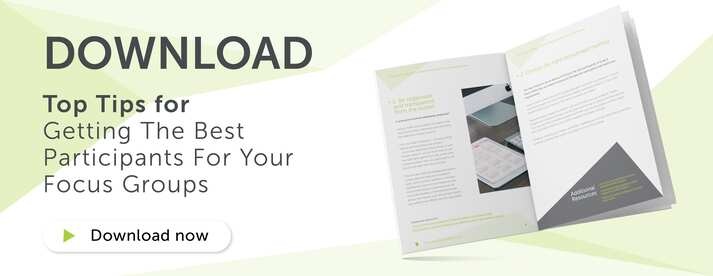
5 tips for conducting friendship pairs in qualitative market research
What is a friendship pair?
A friendship pair is a type of qualitative market research technique whereby market researchers carry out an in-depth interview with two or three participants rather than one. These interviews usually involve two or three people with a usefully paired demographic being interviewed together. However, it is sometimes the case that two friends or family members are recruited to be interviewed together to enable a more free-flowing discussion.
Friendship pair interviews allow researchers to generate rich, insightful results by probing around each person’s experience and using any similarities and differences to explore the subject more deeply. Because of the social dynamic and close relationship between the participants, friendship pair interviews can help to deliver a clear understanding of the consumer’s true thoughts and opinions. And of course, because they are with a friend, participants are usually much more likely to provide forthcoming and honest answers because they don’t feel biased or intimidated in any way.
Because of this, friendship pair interviews are a really useful technique for tackling sensitive subject matters, as participants feel more at ease in the presence of friends or family members so will be more open with their responses. Likewise, it’s also a really useful technique when recruiting children or young people.
Read on for our top five tips on how to successfully carry out friendship pair interviews and generate the best results every time…
1) Time management is key
Because of the nature of the technique, friendship pair interviews take longer to plan and prepare for than recruiting for other methods such as focus groups as you will need to source the main participant – but it’s then up to them to source a relevant friend. There may also be additional criteria that the friend needs to meet, so in a way you are relying on your participant to be the recruiter.
In order to recruit a friendship pair properly and allow enough time for you to recruit the first respondent and for them to then source the right friend, we would recommend allowing at least two-three weeks. As the participant is taking on aspects of the recruiter’s role, there could be a higher drop-out risk due to them undertaking more responsibility and work for the research.
However, there are a few ways to combat this. Alongside offering an additional incentive for sourcing the friend, you need to ensure that you are utilising a significant over-recruit. We recommend an over-recruit of three pairs for two to show on the day. Although this may seem more expensive in the short-term, it can save missed deadlines and insights. If you would like more information on why you should consider an over-recruit, check out our blog post.

2) Include additional incentives
As the main respondent has to go out of their way to source a friend for the research, you should be sure to offer them an additional incentive for their time on top of the incentive they would already be receiving for taking part in the study. Not only will offering them the additional incentive show you are grateful for the extra time they are taking, but they are more likely to be responsible for their friend because they will only receive the additional incentive if their friend shows up on the day – which means that you are less likely to be faced with a dropout on the day.
3) Don’t give away too much
When it comes to friendship pairs, there is a very fine line between giving the main respondent enough information to source the right friend and not giving too much information away. It’s a difficult technique to master – after all, you don’t want to risk biased answers due to your participant knowing too much about the research criteria. The best way round this is to give your main participant enough top level info to source a friend and then keep in regular communication with them throughout their search to help with any questions or queries they might have.
4) Make the respondent feel valuable
As we said above, friendship pairs rely heavily on the participant so it’s really important to make sure they feel important. As well as offering a suitable incentive, you can also limit dropouts at no extra cost just by ensuring you make the main participant feel valuable – yes, it really is that simple! After all, if they feel appreciated within the research project, they’re much more likely to put more effort into ensuring it all goes smoothly and that their friend turns up, too.
5) Set realistic timeframes
With any type of market research project there’s always going to be deadlines that need to be met – but when conducting friendship pairs, setting the main participant unrealistic and unachievable goals won’t help you meet your deadlines any faster, as tempting as it can be. Instead, make sure you give the participant all the deadlines at the start of the project to keep them on track – and most importantly, make sure they can be met within a realistic timeframe to keep them motivated and on track without feeling pressurised or stressed.
If you are thinking about conducting friendship pairs within qualitative market research, you might also like to think about how to go about recruiting the best possible participants for your project. Why not download our guide today to find out more?














